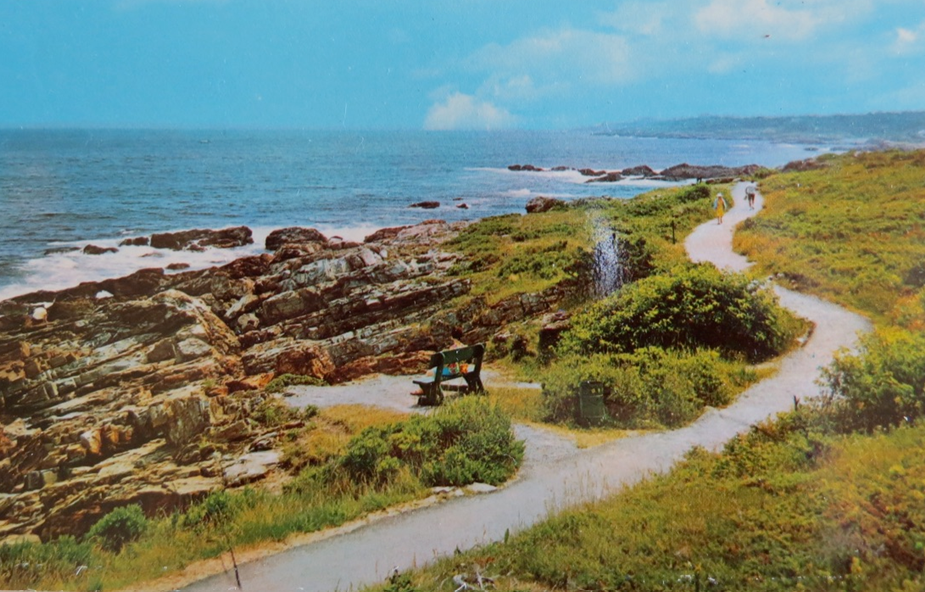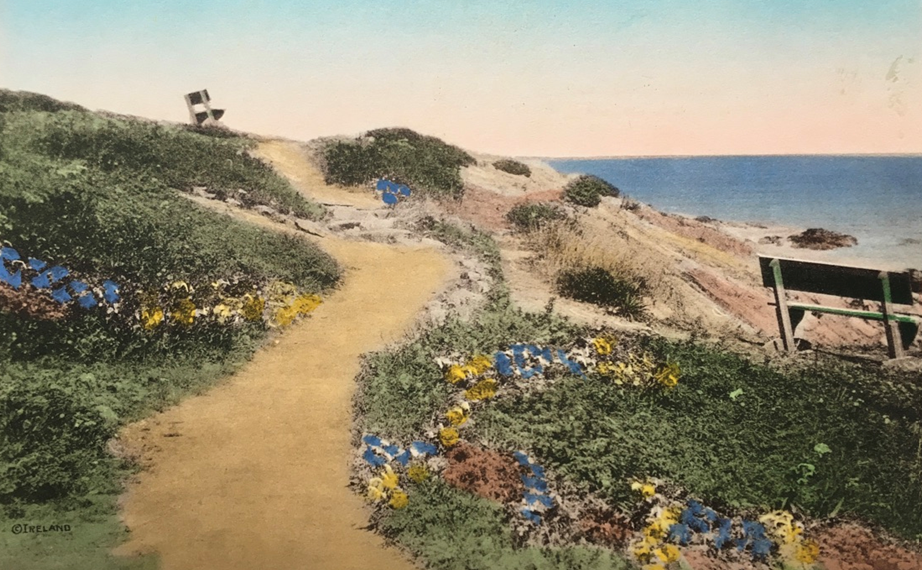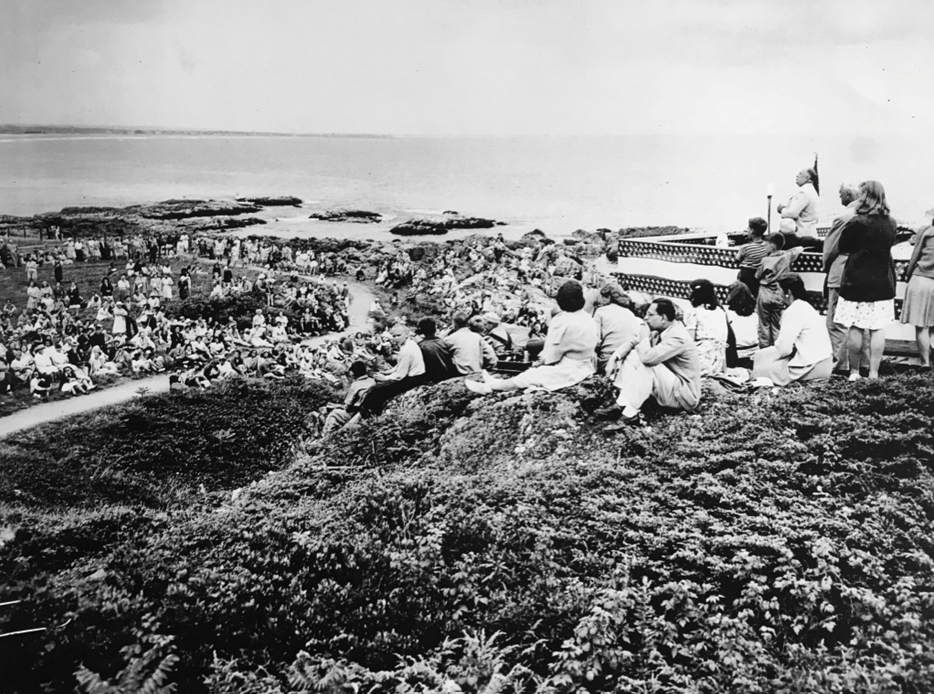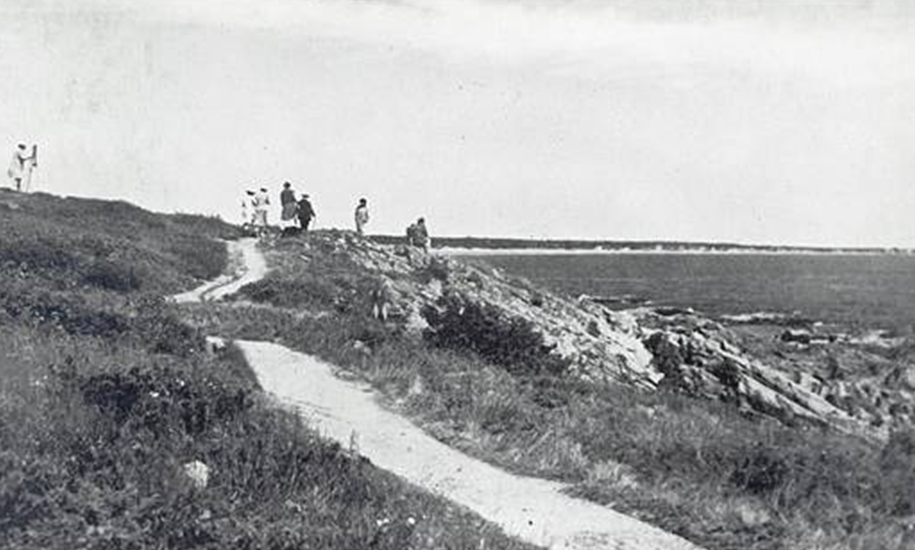Marginal Way now on National Register of Historic Places
OGUNQUIT, Maine — Ogunquit’s Marginal Way recently received an extraordinary honor. The path was officially placed on the National Register of Historic Places by the United States Department of the Interior. It is a unique honor, as this designation is bestowed on very few trails across this nation.

The National Register of Historic Places is the official list of the nation's historic places worthy of preservation. Authorized by the National Historic Preservation Act of 1966, the National Park Service's National Register of Historic Places is part of a national program to coordinate and support public and private efforts to identify, evaluate, and protect America's historic and archeological resources.
Michael Goebel-Bain, National Register and Survey Coordinator for the Maine Historic Preservation Commission, shepherded the nomination of the Marginal Way through an arduous process of eligibility assessment, research to prepare required documentation, and a presentation to the State Commission for their approval before being sent to Washington for final approval.

The Marginal Way is a paved five-foot wide, public footpath located in Ogunquit, Maine. The path follows beautiful coastal rocky ledges for approximately one and one quarter miles, providing breathtaking views of the Ogunquit River to the north, its merger with the Atlantic Ocean and Oarweed Cove to the south. The Marginal Way offers one of the most accessible and most dramatic panoramas of a rocky coastline in Maine with sedimentary rocks, cross-cutting dykes, and glacial features that represent almost a half billion years of history.
The picturesque footpath is called the “margin” simply because it exists at the edge of land and sea, with all its cliffs, sandy coves, weather beaten trees, tidal pools, and seaside plants. The Marginal Way, encompassing almost 12 acres, lies along the southeast shoreline of the picturesque town, and can be reached by eight public access paths along its length. Historically several Native American tribes hunted, fished, and grew crops in this area. It is assumed they traveled along this path for many years, moving from ocean cliffs to inland fields and pastures.

Three men in particular, Josiah Chase, F. Raymond Brewster, and Edward Hoyt, were instrumental in the preservation of this path. Chase abandoned his development plans for 100 small cottages and donated his land to the town in 1925. F. Raymond Brewster was instrumental in persuading Chase to make the donation and to preserve the pathway for the public, not just for the subdivision owners. He also lobbied for the bronze plaque to commemorate the gift. The Marginal Way was eventually officially dedicated in 1947. Edward R. Hoyt worked his whole life for the preservation and beautification of the coastal trail, and to make sure that the path would always be open to the public.

The town of Ogunquit’s Marginal Way Committee, under Chair Joan Griswold, began inquiries into the possibility and the process to be on the National Register in the fall of 2020. The committee felt strongly that this path was unique in so many ways, it deserved this honorific title. In December of 2020, the Eligibility Assessment Form with photographs was submitted by Elaine Cooper, committee member, to the Maine Historic Preservation Commission for review. On March 15, 2021, the committee was notified the property was indeed eligible for nomination to the National Register.
The Maine Commission stated in their determination letter that the property was associated with events that had made a significant contribution to the broad patterns of our history.
“The Marginal Way is locally significant for its association with entertainment/ recreation and conservation," the letter stated. "The property’s donation to the town for public use is a significant example of the preservation of sections of Maine coast for public use during a period of rapid coastal development.”
That notification was the impetus for nine-months of intense research by Cooper, on behalf of the Marginal Way Committee. Her research included in-depth studies of the geology of the way, the Abenaki tribe who lived on the land for 13,000 years, the significant individuals responsible for the donation and preservation of the land, a description of the property, the artists who made Ogunquit their home and the Marginal Way a focus of many paintings, and the natural history that make this walk so special.
Michael Goebel-Bain came to Ogunquit in November 2021 to photograph the entire length of the path, and then coordinated Cooper’s research, along with the committee’s collection of historic photographs into the lengthy application. Goebel-Bain presented the submission to the Maine Historic Preservation Commission for review in January 2022. The commission unanimously and enthusiastically supported the nomination of the Marginal Way, and sent it to Washington for final approval by the U.S. Department of the Interior.
Ogunquit is now on the map for having a nationally recognized historic trail.
This article originally appeared on Portsmouth Herald: Ogunquit Maine Marginal Way now on National Register of Historic Places

